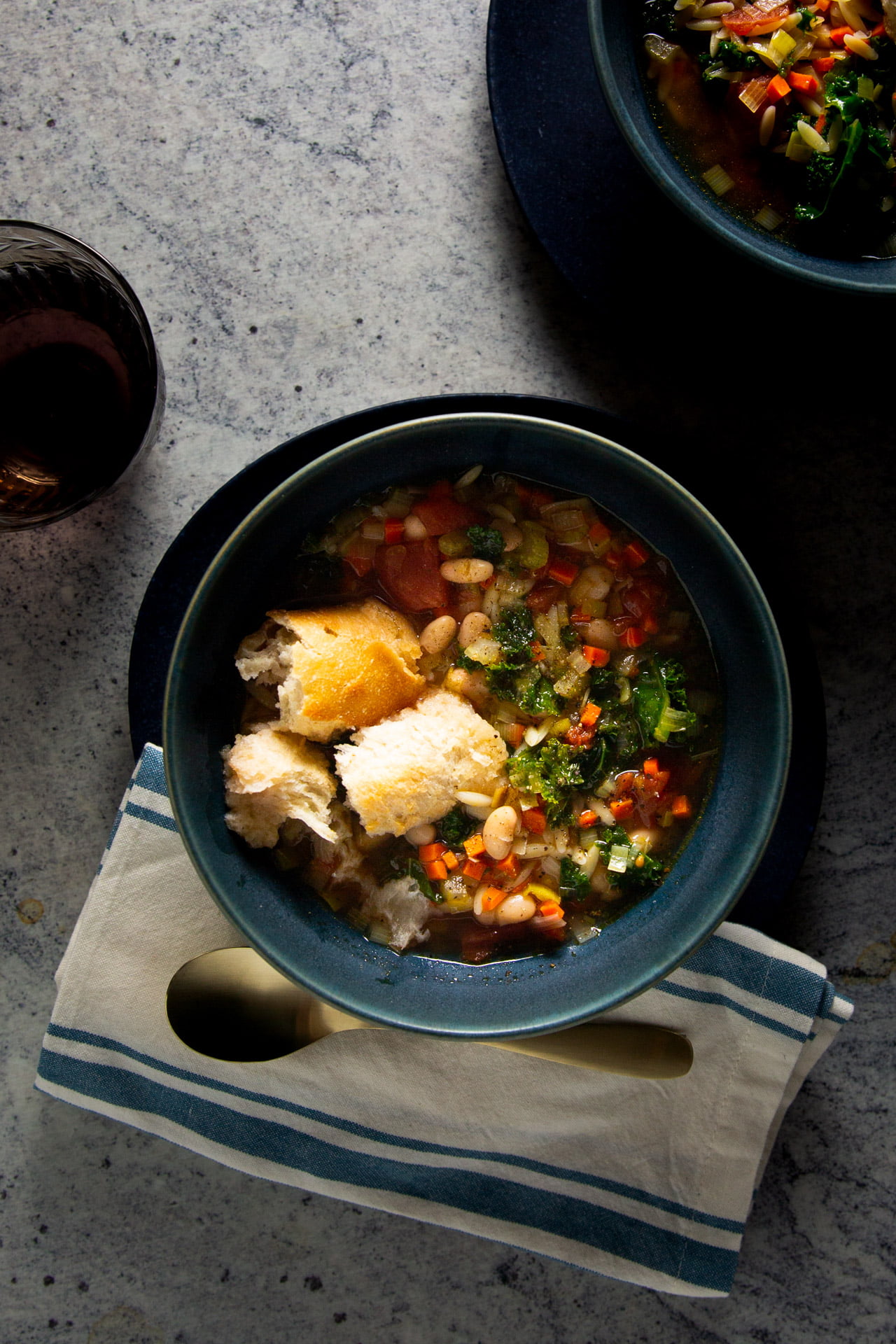
ABOUT THIS RECIPE
This Italian pasta and bean soup—known as pasta e fagioli—is pure comfort in a bowl, a very cozy soup. It’s hearty yet light, with vegetables, tender beans, and small pasta in a flavorful tomato broth.
You start building flavor with the classic Italian sofrito (leeks, celery, carrots, and garlic), and you finish it with greens, high-quality olive oil, and Parmesan cheese or a dairy-free alternative. It’s the kind of recipe you’ll come back to again and again, whether you’re cooking for a rainy afternoon or a weeknight family dinner.
Why you’ll love this recipe
- Pantry-friendly – Uses vegetables, canned beans, and pasta you probably have on hand.
- Full of flavor – The sofrito base gives depth without needing meat.
- Customizable – Use kale, spinach, or whatever greens you have. Any mild beans work.
- Make-ahead friendly – Great for meal prep and freezes well.
- Comfort food made lighter – Hearty enough for dinner but not heavy.
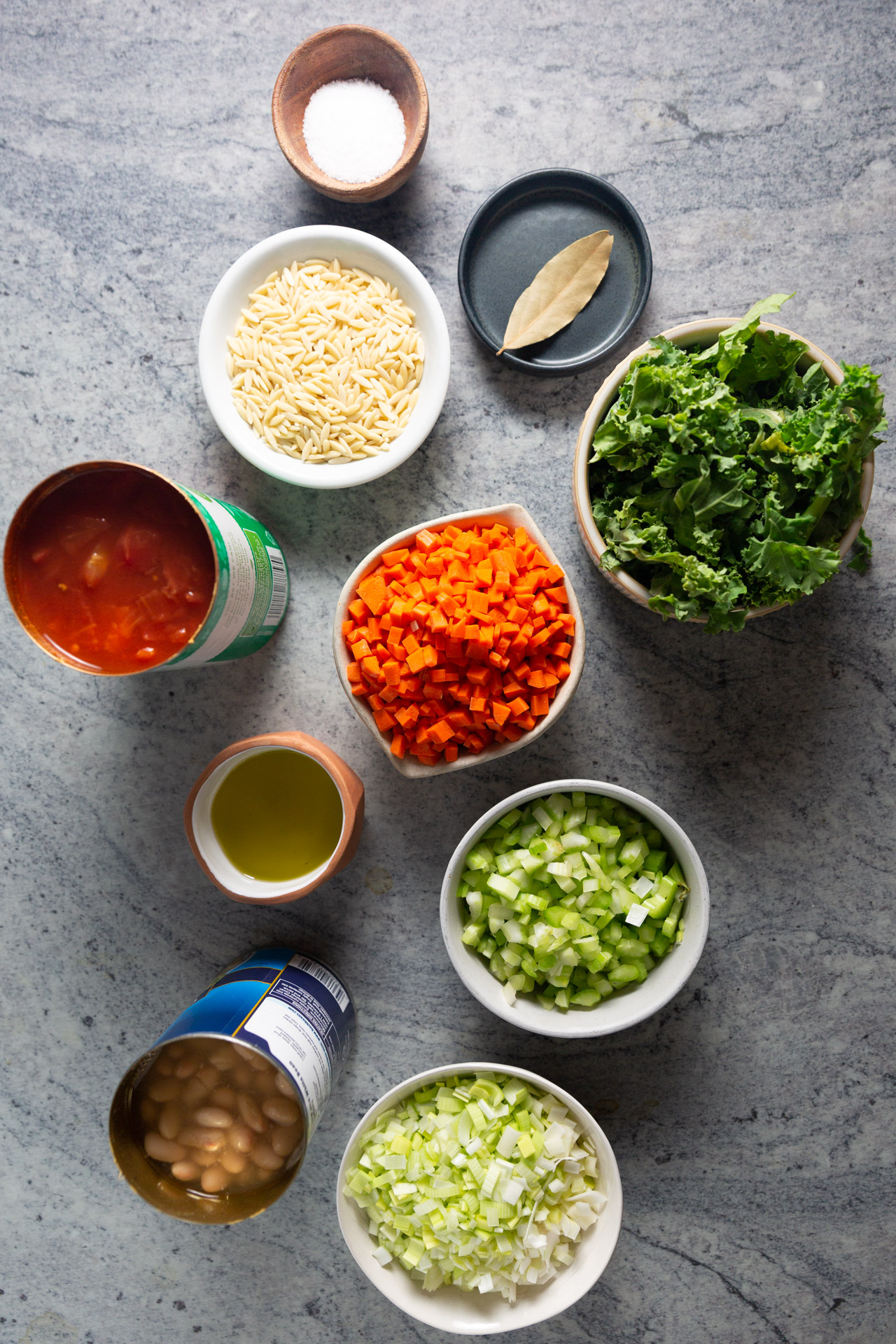
Ingredients notes
- Leeks, use the white and light green parts; sub with onions.
- Celery & carrot, the backbone of the sofrito, should be chopped small so they soften quickly.
- Garlic, slice instead of mincing to avoid burning.
- Olive oil, use a good olive oil
- Canned tomatoes: diced, crushed, or homemade puree.
- Beans, navy or cannellini are classic; garbanzo beans also work.
- Pasta, small shapes like ditalini, orzo, or stars
- Greens, such as kale or spinach, add them at the end.
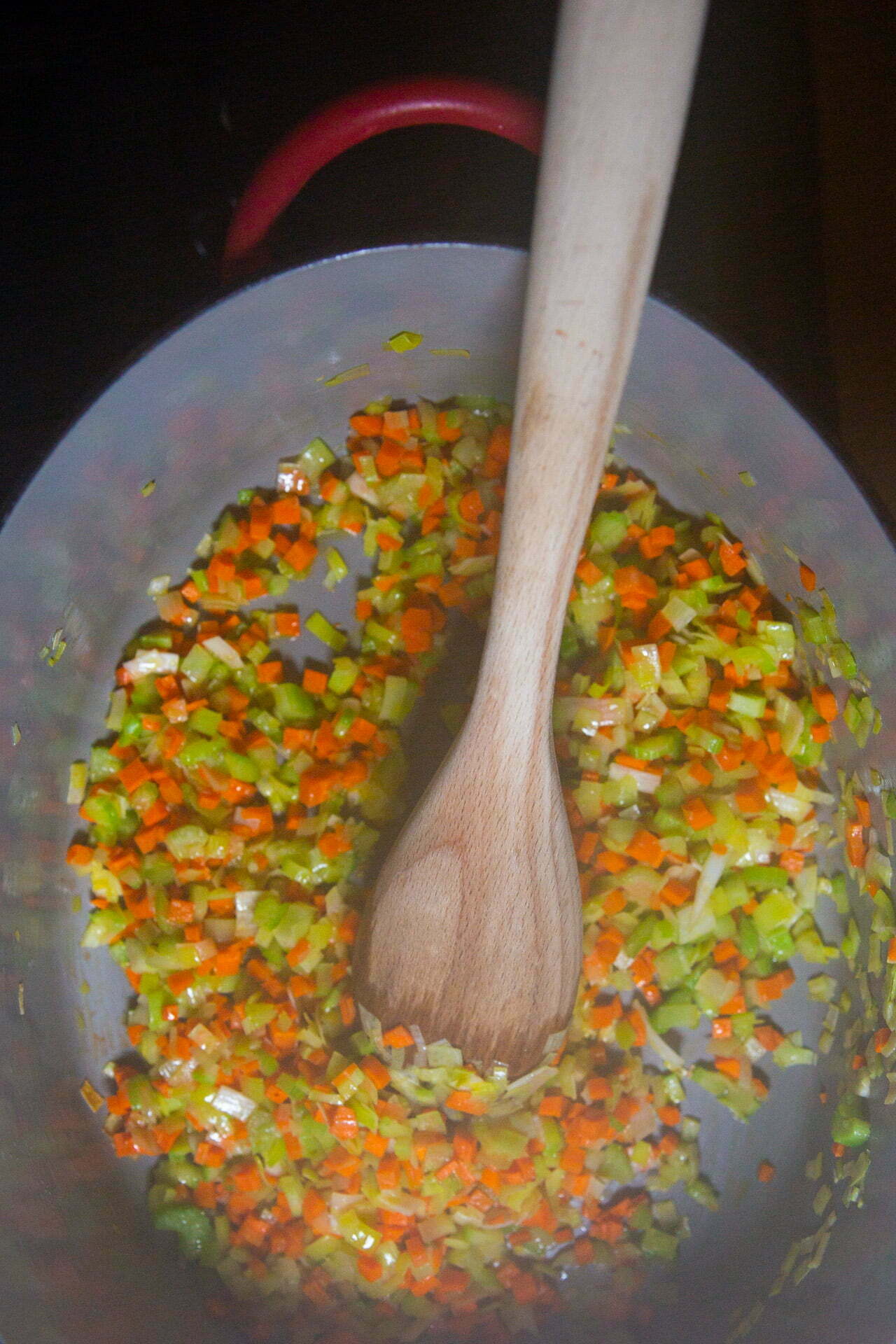
HOW TO MAKE VEGAN ITALIAN SOUP?
- Make the sofrito
- Simmer
- Cook pasta separately
- Finish by adding the cooked pasta, your choice of greens, and any other desired ingredients.
- Serve
Variations
- One-pot version – Cook pasta directly in the soup; serve immediately to keep texture.
- Extra vegetables – Add zucchini, peas, or diced potatoes.
Home-cook to home-cook tips
- Cooking pasta separately keeps the broth from becoming too starchy.
- Always taste before serving—beans and broth can vary in saltiness.
- Use leftover greens from the fridge—chard, beet greens, or arugula all work.
- Freeze in single portions for quick lunches or dinners.
FREQUENTLY ASKED QUESTIONS
Pasta and Fagioli. Pasta e Fagioli, in Italian, literally translates to ‘pasta and beans.’ This soup features beans, pasta, and a rich flavor.
Can I change the beans? Of course, you can change them for the ones you have at home or add more. This soup pairs perfectly with kidney beans, garbanzo beans, or any other mild-flavored beans.
Can I make it vegetarian or dairy-free?
Yes, skip the cheese or use a dairy-free alternative, such as a dairy-free Parmesan.
Do I have to use small pasta?
Small shapes work best for spoonfuls of soup, but you can use any type of pasta you have.
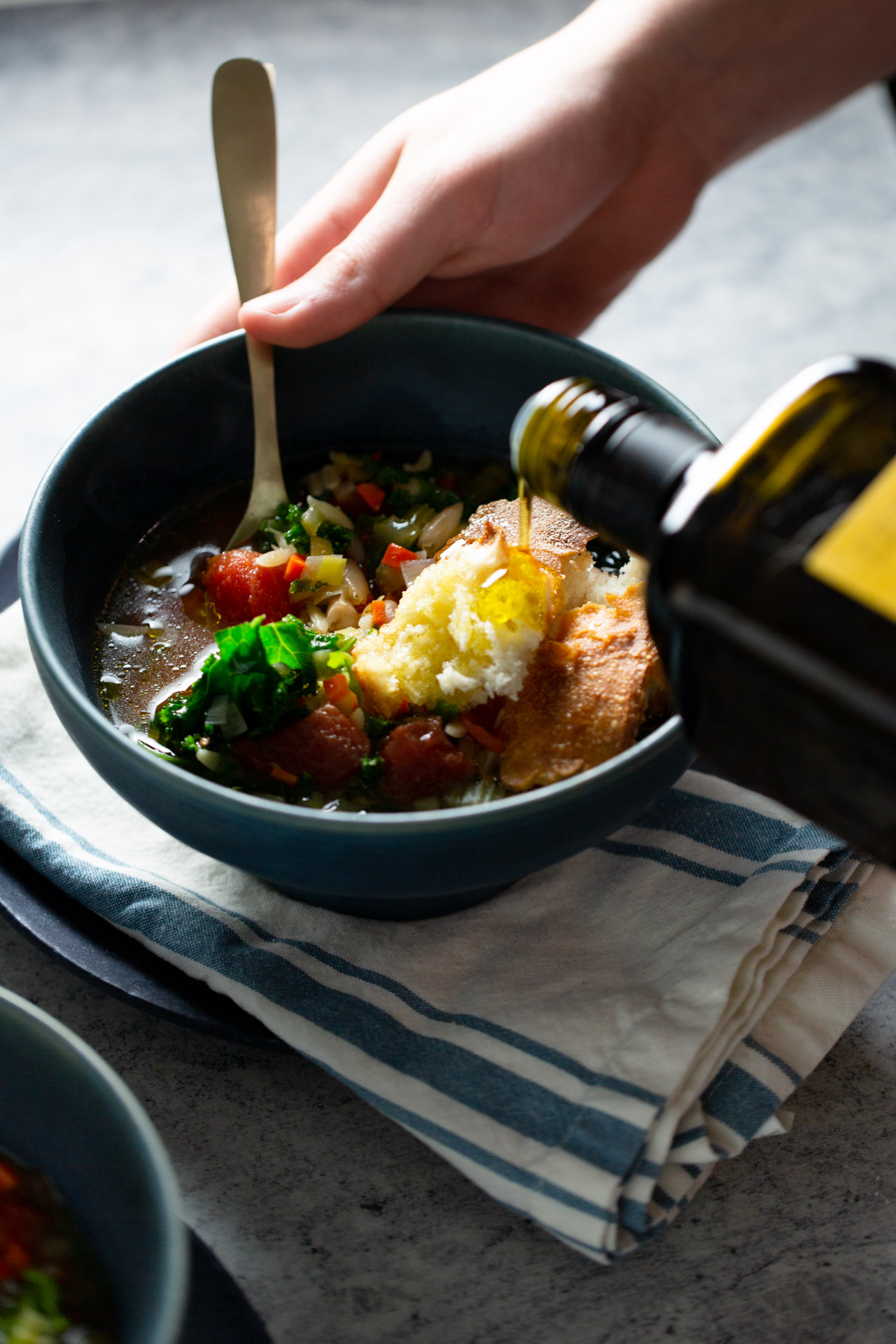
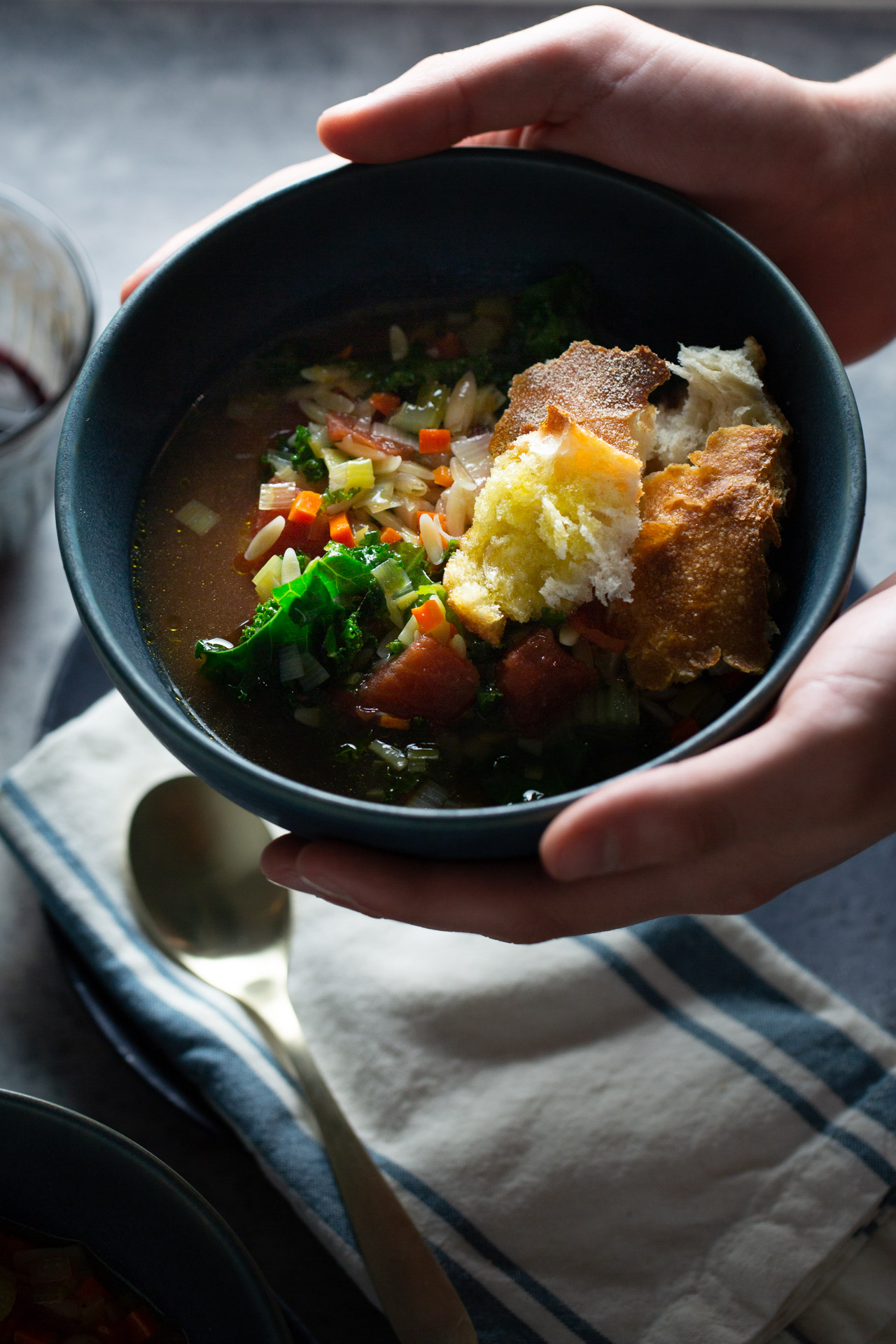
Easy Italian Pasta e Fagioli Soup (Pasta & Bean Soup)
Equipment
Ingredients
- 4 tablespoons olive oil
- 1 leek white and light green part, finely chopped (or 1 onion)
- 3 celery stalks finely chopped
- 3 carrots peeled and finely chopped
- ½ teaspoon salt
- 2 cloves garlic sliced
- 1 15 oz can diced tomato (or crushed)
- 1½ cups cooked navy beans or 1 can, drained and rinsed
- 4 cups water or vegetable broth
- 1 bay leaf
- 2 cups kale or spinach chopped
- ⅔ cup small pasta ditalini, orzo, or stars
- Freshly ground black pepper to taste
For serving:
- Rustic bread torn into pieces
- Olive oil
- Parmesan cheese or dairy-free Parmesan
Instructions
- Make the sofrito – In a large soup pot over medium heat, warm the olive oil. Add leeks, celery, carrots, and salt. Cook 5–7 minutes until softened but not browned. Add garlic and cook 2 more minutes.
- Simmer – Stir in tomatoes, beans, broth, and bay leaf. Cover and simmer for about 10 minutes until vegetables are tender.
- Cook pasta separately – In another pot, cook pasta al dente according to package instructions. Drain and set aside.
- Finish – Add the pasta and greens to the soup pot. Cover and cook for 3 minutes until greens are wilted.
- Serve – Ladle into bowls, drizzle with olive oil, sprinkle with Parmesan, and serve with bread.
Notes
Nutrition
information
Nutritional information of this recipe is only an estimate, the accuracy for any recipe on this site is not guaranteed.
This post appeared first in Ale Cooks in November 2015.
